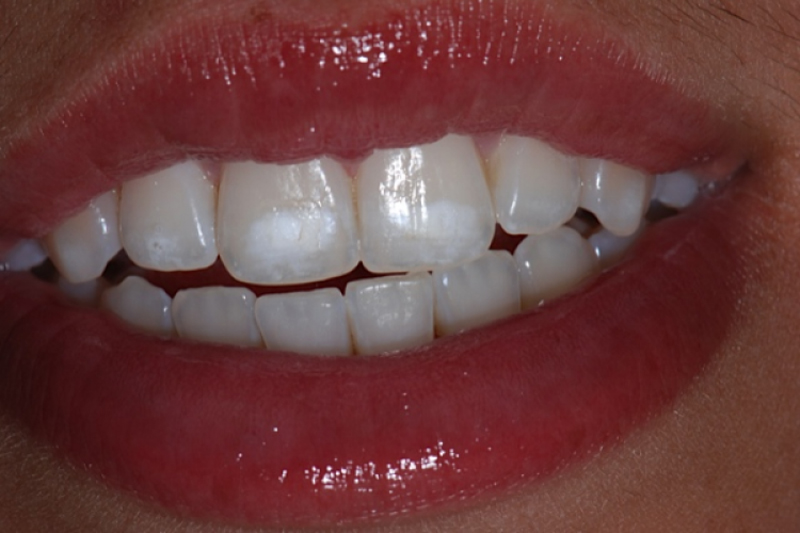 The loss of calcium from the hard enamel covering the teeth. The enamel is made up almost entirely of calcified material. The result of dental decalcification is the loss of the hard, smooth tooth surface, which becomes chalky and porous as the enamel dissolves. This makes the tooth more susceptible to decay. The condition is common in young children who habitually suck on baby bottles filled with sweet liquids. It is also seen on teeth after braces are removed, because of food impinging on the wires. The teeth cannot naturally replace enamel destroyed by decalcification. A dentist should be consulted to treat the condition. Bonding may be needed to restore the tooth to its original condition.
The loss of calcium from the hard enamel covering the teeth. The enamel is made up almost entirely of calcified material. The result of dental decalcification is the loss of the hard, smooth tooth surface, which becomes chalky and porous as the enamel dissolves. This makes the tooth more susceptible to decay. The condition is common in young children who habitually suck on baby bottles filled with sweet liquids. It is also seen on teeth after braces are removed, because of food impinging on the wires. The teeth cannot naturally replace enamel destroyed by decalcification. A dentist should be consulted to treat the condition. Bonding may be needed to restore the tooth to its original condition.
The process of mineral dissolution in a tooth is known as dental decalcification and marks the initial stage of tooth decay. This condition arises when bacteria present in plaque interact with refined carbohydrates, predominantly sugars found in food, resulting in acid production. Prolonged or repeated exposure to this acid leads to surface alterations on the tooth. If the decalcification progresses beyond the enamel layer, it permeates the dentine, enabling the infiltration of bacteria into the inner pulp.
